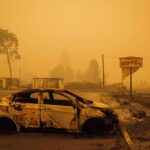Property/catastrophe insurers have been focused on winning new business, which means new customers are seeing bigger price cuts, according to a market report from a wholesale broker specializing in catastrophe risk placements.
NAPCO‘s Fall 2014 State of the Market report notes that the price of property-cat insurance has been moving down in the range of 5-20 percent for most accounts in 2014—with variations depending on the account’s loss history, location and previous price reductions.
But early signs of carrier pricing discipline started to emerge by the fourth quarter, the report says. While insurers “have been attempting to hold the line” on renewal pricing, NAPCO reports that they are “more willing” to slash rates to capture new accounts and are also increasingly willing to offer more capacity to offset the impact of lower rates on carrier premium volume.
Does that mean insureds should change carriers?
Offering some placement considerations for insurers, the wholesale broker initially notes that “replacing incumbent insurers can lead to greater cost savings for some accounts.” The report warns, however, that factors such as previous pricing history come into play and that remarketing programs might not produce savings and also might not be a prudent long-term strategy.
The report, which also suggests that it would take a $70 billion event to turn a soft market with more than $700 billion in policyholders surplus, notes that even earthquake coverage rates remain soft.
Actually, NAPCO characterizes the earthquake market as “very soft” in spite of the Napa earthquake in August.
“Critical wind deductible buydown policies are now being priced in the range of 5-7 percent of the desired buydown limit,” NAPCO says, contrasting that to a previous range of 12-15 percent.
Addressing potential trouble spots, the NAPCO report discusses terrorism and Ebola coverage issues.
With respect to terrorism, NAPCO says:
- Insurers have been including endorsements on contracts that extend into 2015, stipulating that policyholders lose terrorism coverage if TRIA is not reauthorized or is dramatically altered.
- If the program is extended, premiums will be prorated.
- With this in mind, insureds may want to consider standalone coverage when possible, NAPCO advises.
- In the private terror market, an influx of new capacity has helped to drive prices down.
- Demand has been increasing, driven in part by lender requirements as well as new buyers attracted by the more competitive rates.
- Terror insurance capacity remains tight in major cities.
As for Ebola, the report says:
- The Ebola virus typically will have no impact on physical property, which means first-party property insurance—requiring direct physical loss to the property and proof of causation—would not respond.
- Still, “secondary impacts” related to a pandemic event could cause actual damage, NAPCO says, citing an Advisen report (“The Initial Impact of Ebola on First-Party Property Insurance Coverage,” Advisen Risk Network, Oct. 23, 2014).
- For business interruption coverage to trigger, a policyholder must sustain a loss in business after suffering a direct physical loss that is attributable to a covered peril.
- Some coverage is becoming available for nonphysical damage from business interruption as a result of a shutdown or evacuation of an insured’s location from infectious diseases.
NAPCO cites the Catlin and Ark syndicates in the London market among those offering this last product. And on the demand side, NAPCO reports that the coverage for nonphysical damage from business interruption is being mainly sought by healthcare insureds but that there is also “definite interest” coming from the real estate and municipal sectors.
NAPCO explains that the typical trigger for the coverage would be a governmental, or similar, shutdown of a premises subject to a waiting period.
To date, insurers seem to be charging a rate of about 10 percent of the limit to provide this coverage.
Was this article valuable?
Here are more articles you may enjoy.


 ‘Buffett Got it Wrong’ on California Fire Risk: PG&E CEO
‘Buffett Got it Wrong’ on California Fire Risk: PG&E CEO  Berkshire’s Jain on Cyber: ‘The Mindset Should Be You’re Not Making Money’
Berkshire’s Jain on Cyber: ‘The Mindset Should Be You’re Not Making Money’  4,800 Claims Handled by Unlicensed Adjusters in Florida After Irma, Lawsuit Says
4,800 Claims Handled by Unlicensed Adjusters in Florida After Irma, Lawsuit Says  The Top 15 U.S. Metros with High Exposure to Wildfire Risk
The Top 15 U.S. Metros with High Exposure to Wildfire Risk 

